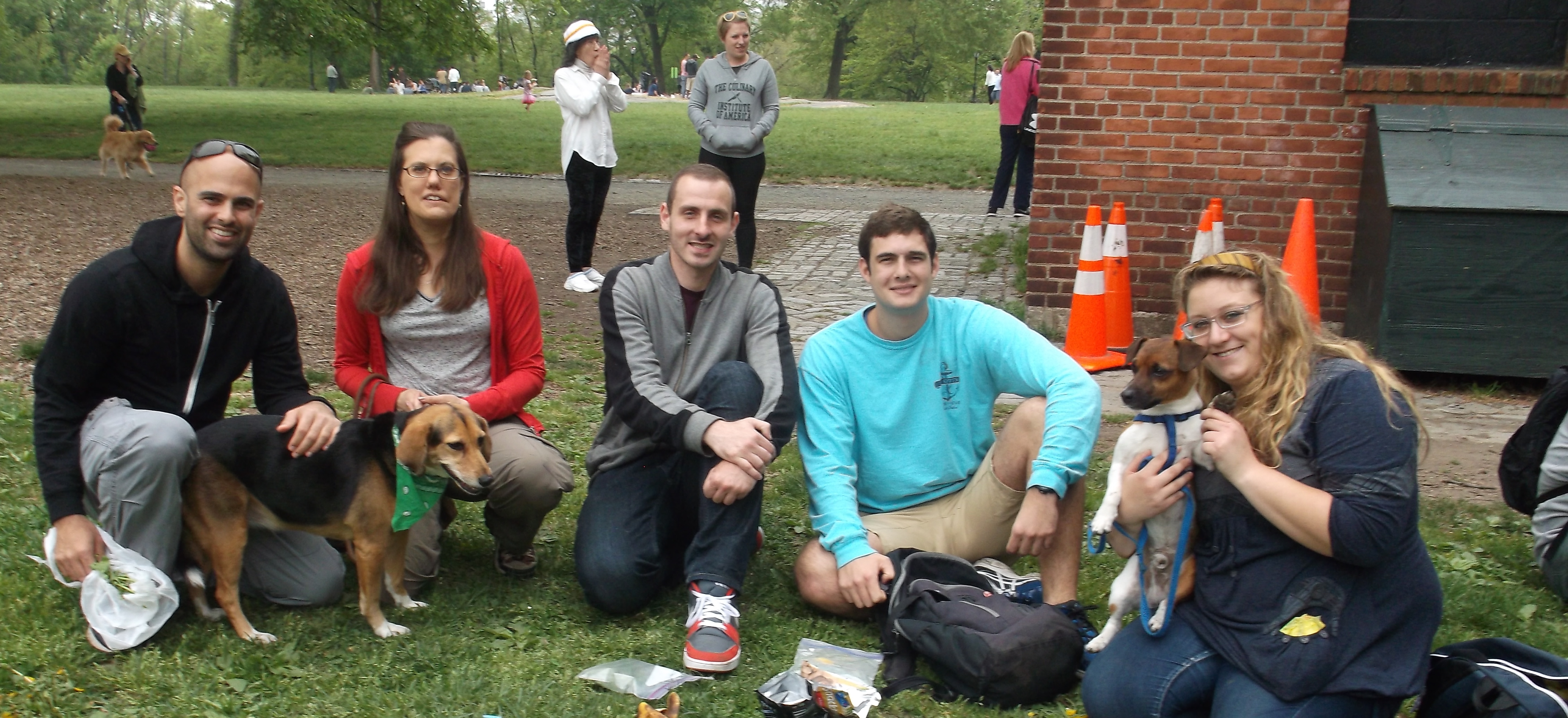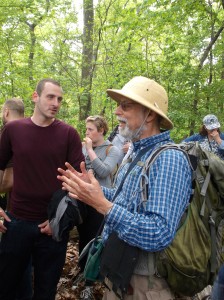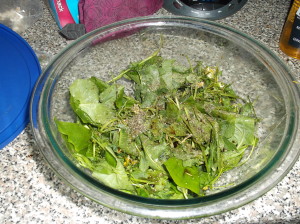SEJ students forage in Central Park, make salads from gathered greens

By Staci Strobl
Central Park can feed you if you know what to pick. Environmental Crime (SUS 240) students toured with Widman Steve Brill, a foraging expert, in Central Park on Saturday May 9, 2015. Exploring the deviant behavior of sustainably taking what you need directly from the land (Wildman has been arrested before for picking dandelions), the students got in touch with local flora, learning what is edible and what isn’t.

In days long past, and in some surviving traditional cultures, foraging represented a way of life. In a world of private property, globalization, and mass produced food, this practice has been marginalized, the domain of hipsters and survivalists. Vestiges of the practice live on as some people of Eastern European descent, for example, still forage for wild mushrooms in the fall and Chinese-Americans can be found collecting ginkgo nuts around the same time of year.
However, if you forage from many public parks you face a trespassing charge. Last year, John Taris was fined $75 for daring to pick horta (dandelion greens) from a public park in northwest Chicago. The Cook County Forest Preserve officers felt that if done on a larger scale, foraging could threaten the plant species and natural environment they are trying to protect. In Widman’s case, the NYPD were operating under the theory that dandelions in public parks belong to the public, and can’t be lifted for individual, personal use.
The vast majority of foragers take only small amounts for personal use and are careful to make sure to leave plant life in a condition to recover– and even thrive– from the picking. True, if millions of New Yorkers showed up in Central Park to forage, the park could easily be picked bare (a modern day tragedy of the commons). But foraging does not seem to be that widespread and the average New Yorker has no idea what to pick and how to prepare it.

We forage in the supermarket and not from the soil. And based on the plethora of spring greens available in the park, the supermarket food monoculture has us with less options than nature provides. The Central Park Salad I made entirely from foraged greens (and my students went home and also made salads for their friends and family) contained the leaves of blue violet, chickweed, curly dock, field mustard, wood sorrel, and dandelions. And it had a deeper, more delicious flavor than any green salad I have had in recent memory.
I can’t help but reflecting on the alienation from plant life and nature we have as a result of modern food production, not to mention the dividing of land between public parks and private property, leaving nothing left alone and perhaps picked occasionally. Meanwhile, big agriculture uses pesticides that are linked to the collapse of bee colonies and this is not defined as a crime. The modern world does seem out of balance and what to do about it… well, that’s complicated.
SEJ professor Staci Strobl has taught environmental crime at John Jay College of Criminal Justice.